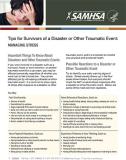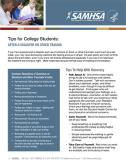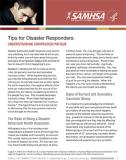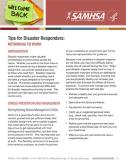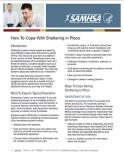
This fact sheet provides tips for coping with sheltering in place. It explains common reactions when sheltering in place, and provides recommendations for caring for oneself and the family.
Units per Product
Download
Sheltering in Place: How To Cope
File Type: PDF
File Size: 642 KB


